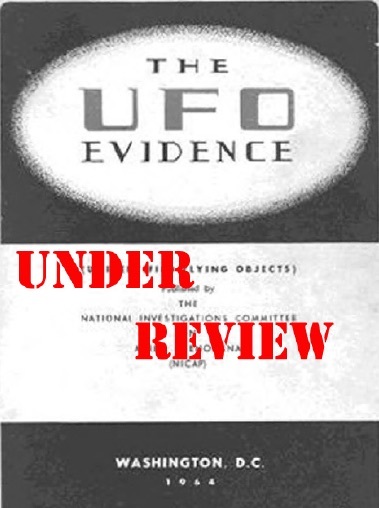
May 17, 1958 - Ft. Lauderdale, FL
May 17, 1958--Ft. Lauderdale, Florida. UFO sped away when light was shone at it. [II]1
Section II lists no source but gives the following description:
Approached from N at low altitude; high- powered spotlight turned on it, UFO flared brilliantly, shot out of sight.2
Blue Book file3
Blue Book has a file for the 18th that matches this description. It was seen shortly after midnight (5/17-18), describes the high powered spotlight and even matches the two observers (a man and his son). It is probably the same sighting. It was listed as “insufficient data for analysis”. The particulars of the sighting are as follows:
It was described as cigar-shaped when it was horizontal and triangular shaped when vertical.
It was dull orange but changed to white when it altered direction.
It was first observed at 5-10 degrees elevation due north.
It was last observed at 80 degrees elevation to the north.
It was seen coming directly towards the observers. They shined a spotlight on it and the object went into a steep climb before disappearing.
Analysis
I had previously evaluated this case, as part of my Blue Book review in SUNlite 11-6, as a probable aircraft. After closer examination, it seems that I was in error. The Fort Lauderdale area is roughly 140 miles south of Cape Canaveral. That fact made me wonder if some missile activity might explain the event. Astronautix lists the following4:
1958 May 18 - . 05:05 GMT - . Launch Site: Cape Canaveral. Launch Complex: Cape Canaveral LC26B. LV Family: Jupiter. Launch Vehicle: Jupiter IRBM.
Gaslight Re-entry Vehicle test - . Nation: USA. Agency: NASA Huntsville, USAF. Apogee: 500 km (310 mi).
AM-5, carrying America’s first tactical type re-entry nose cone, was fired from AMR at 0005 hours EST. This was also the first flight test. for first and second stage separation. Impact was 28.3 nm under and 15.6 nm to the right at a range of about 1,275 nm after approximately 960 seconds of flight. In less than five hours, the nose cone was recovered - the world’s first recovery of an IRBM nose cone.

A Jupiter missile’s boost phase lasted about 158 seconds and the vernier engines cutoff around 174 seconds. This all happened between 80 and 120 miles altitude. For a distance of 140 miles, the angle of elevation would be between 30 and 40 degrees.
Considering the limitations of an observers ability to accurately measure elevation angles, one can assume that it is possible the witness overestimated the angle of elevation. Additionally, shining the light at the object had little to do with it disappearing. The important point was the witnesses were looking north at the time of the rocket launch and did not see it. Instead, they saw a UFO that had all the characteristics of a rocket launch. The following image of an Atlas V rocket launch during the boost phase, prior to booster separation at 100 seconds, is “cigar shaped” when it started to move down range.

Conclusion
There is no good reason to dismiss the possibility that the source of this sighting was the Jupiter missile launch. The witnesses were looking north towards Cape Canaveral, they saw the UFO at the same time as the rocket launch, and their description is consistent with a rocket launch. I would classify this as “Jupiter rocket launch” and remove it from the best evidence category
Quelle: SUNlite 3/2022
